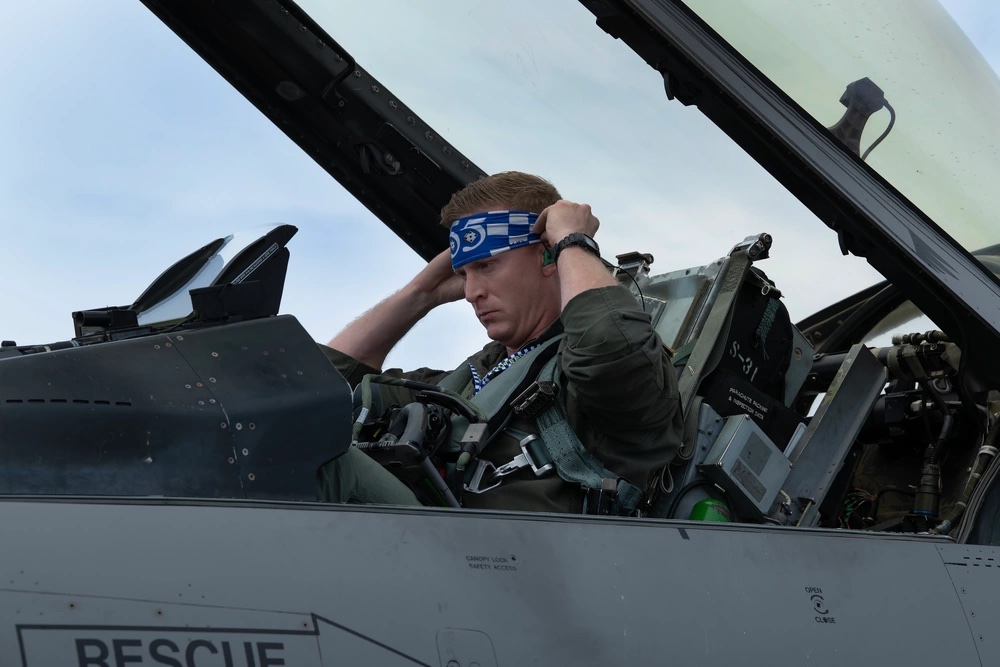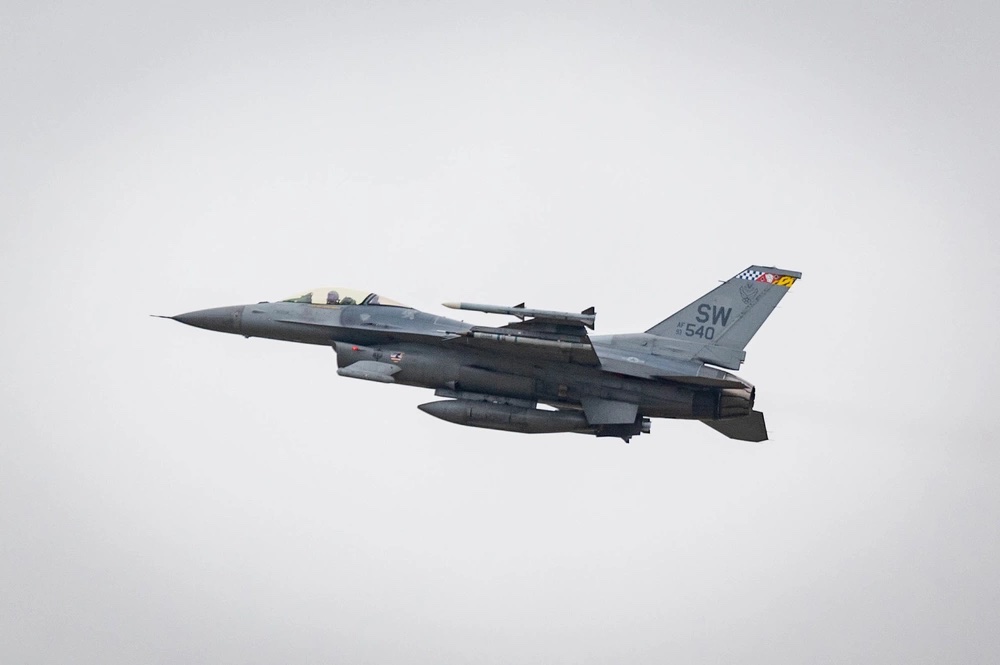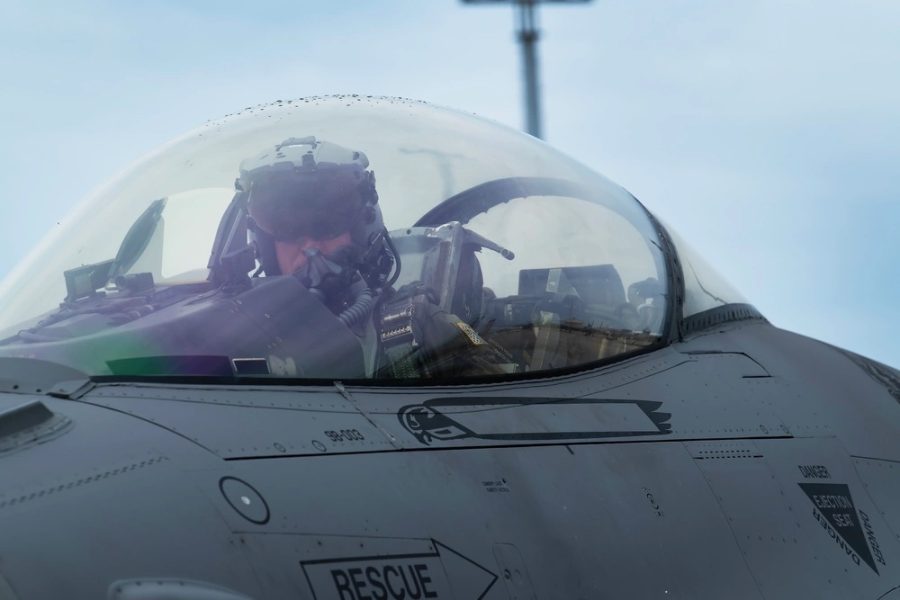Pilot callsigns can take the form of good-natured jokes, obscure references, or easy-to-recall nicknames. But for Capt. Charles Boynton, an F-16 pilot at Shaw Air Force Base, S.C., it’s a reminder of everything he’s gone through to get back in the cockpit
Dubbed “Atlas” after the figure in Greek mythology tasked with carrying the sky on his shoulders, Boynton has spent the past five years or so battling first cancer, then bureaucratic red tape.
“There’s a sense of respect about a call sign that equalizes everyone and usually addresses something you’ve done in the past, good or bad,” Boynton said in a press release about his new callsign.
The 20th Fighter Wing, to which Boynton is assigned, provided additional details on Boynton’s experience to Air & Space Forces Magazine.

Boynton’s Air Force journey began as an F-16 maintainer in the Air Force Reserve in 2012, while also a member of the ROTC program at the University of South Florida. Years later, after commissioning as an officer and completing Initial Flight Training in the fall of 2017, he joined the selective 55-week Euro-NATO Joint Jet Pilot Training Program (ENJJPT) at Sheppard Air Force Base, Texas.
“I never thought I would be a fighter pilot, because everyone talks about how hard it is. You have to be top of the top of the pilot selects and I didn’t think I was top of the top by any means,” he said in a 2020 press release. “I checked the box anyway. It was almost a shot in the dark because I never thought I’d be picked up by ENJJPT.”
But after he was selected, something was wrong. According to the release, Boynton began to experience extreme fatigue. It was a battle just to stay focused, and he even questioned if he wanted to complete the program. Mental or physical illness is a sensitive topic for military aviators, whose careers depend on being medically cleared to fly. But Boynton knew he had to talk with a doctor after feeling physical pain in one of his testicles.
“I knew for sure something was up when she told me we should get an ultrasound right now,” he said.
In July 2018, Boynton was diagnosed with testicular cancer. Most of each testicle had become a tumor, forcing doctors to remove them in a major surgery. Afterwards, Boynton’s medical team discovered abnormalities in his stomach, leading to a second major surgery. Despite the hardship, the pilot’s fellow patients at Moffitt Cancer Center in Tampa, Fla., gave him a sense of perspective.
“Even though I was going through a lot, when you walk through the halls of a cancer center and see children suffering, it’s humbling,” he said in a release. “Ever since I got diagnosed, all the doctors would tell me it’s a 98 percent survival rate, so even though I was in pain, I always knew it could be worse.”
Boynton was declared to be in remission by September 2018, and Air Force doctors gave him a clean bill of health. The 2020 release indicated it would take him just a few months to acquire a medical waiver and get back to flying.
Instead, he faced two and a half of years of frustration and uncertainty.
Applying for medical waivers in the military can often be a time and labor-intensive process, and it can be even more so for aviators. One Air Force neurologist, Dr. Billy Hoffman, told Air & Space Forces Magazine in May that he often encounters a fear of bureaucracy in his work with pilots. Hoffman and other researchers hope pilots can say more about it in future studies on healthcare avoidance among aviators, which they hope could someday help inform better policies and possibly fix the ‘lie to fly’ element of pilot culture.
Boynton in particular had to face medical boards, push for an exception to policy, and stay on track despite suggestions he switch his career field.
He finally returned to flight status in the fall of 2020—and had to restart pilot training in the middle of the COVID-19 pandemic.
“I’ve been very frustrated for the past two and half years, but I didn’t give up, the struggle is what I live for,” he said in 2020.
Over the next few years, the struggle started paying off. Boynton completed undergraduate pilot training in May 2021, became a qualified F-16 pilot in July 2022 and finally achieved fully-mission capable status in February 2023, a few months before heading to Tyndall Air Force Base, Fla., for the large training exercise Checkered Flag 23-2. So was it worth it?
“Flying an F-16 is the most difficult yet coolest thing I’ve ever done,” he said in a release. “It’s mentally and physically rigorous and there’s always something to learn or improve upon every flight. It’s honoring to be given the opportunity to even set foot inside the cockpit, let alone be taken on a massive flag exercise like Checkered Flag or Red Flag.”

